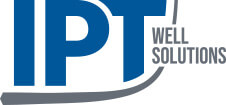At IPT Well Solutions, we’re committed to advancing industry knowledge and supporting the next generation of professionals. Recently, our very own Drilling Manager, Jim Jacobsen, had the opportunity to share his expertise with the Safety Management Majors at Slippery Rock University. Jim led two engaging one-hour classes focused on “Drilling 101,” providing students with a comprehensive overview of the drilling processes and the critical components of a drilling rig.
Key Insights from Jim’s Presentation
Jim’s presentation was an enlightening experience for the students, covering several fundamental aspects of drilling. Here’s a closer look at the key points discussed:
1. Typical Drilling Organization:
Jim explained the organizational structure of a typical office-based drilling operation. Key roles include:
– One engineer per rig
– Three to five rigs per superintendent
– Two well site supervisors per rig
– One safety supervisor per rig (optional)
2. Rig Components and Systems:
The presentation delved into the main components and systems of a drilling rig:
– **Power System:** Most modern rigs use AC electrical power generated by diesel engines paired with AC generators. Some rigs can also use dual power sources, including natural gas or grid power.
– Hoisting System: Key elements include draw works, derrick, crown block, traveling block, wire rope, and electric hoist. These systems enable rigs to handle loads up to 1,000,000 pounds.
– Rotating System: Involves the devices that make the drill bit turn, including the top drive and drill string, which support and turn the drill collars and bit.
– Circulating System: This system handles the drilling fluid (mud) and includes mud pumps, shale shakers, desilters, and blowout preventers (BOPs).
3. Drilling Fluid and Its Importance:
Drilling fluid plays a vital role in well control, cutting removal, lubrication, and cooling. Jim discussed different types of drilling fluids, including water-based, oil-based, and air/foam.
4. Well Control Equipment:
Jim highlighted the importance of well control equipment like blowout preventers (BOPs) and the BOP stack, which is crucial for maintaining safety and preventing blowouts.
5. Horizontal and Directional Drilling:
The session also covered advanced drilling techniques like horizontal and directional drilling, which increase shale reservoir contact and enhance the efficiency of resource extraction.
Engaging the Next Generation
Jim’s classes were not just about imparting knowledge; they were about inspiring the next generation of industry professionals. By providing a clear and detailed understanding of drilling operations and safety measures, Jim helped students appreciate the complexities and innovations in the field.
Join the Conversation
We invite you to take a closer look at the insights shared by Jim in the presentation below. If you have any thoughts or additional insights, please share them in the comments. Let’s continue to foster a collaborative and knowledgeable industry community.
